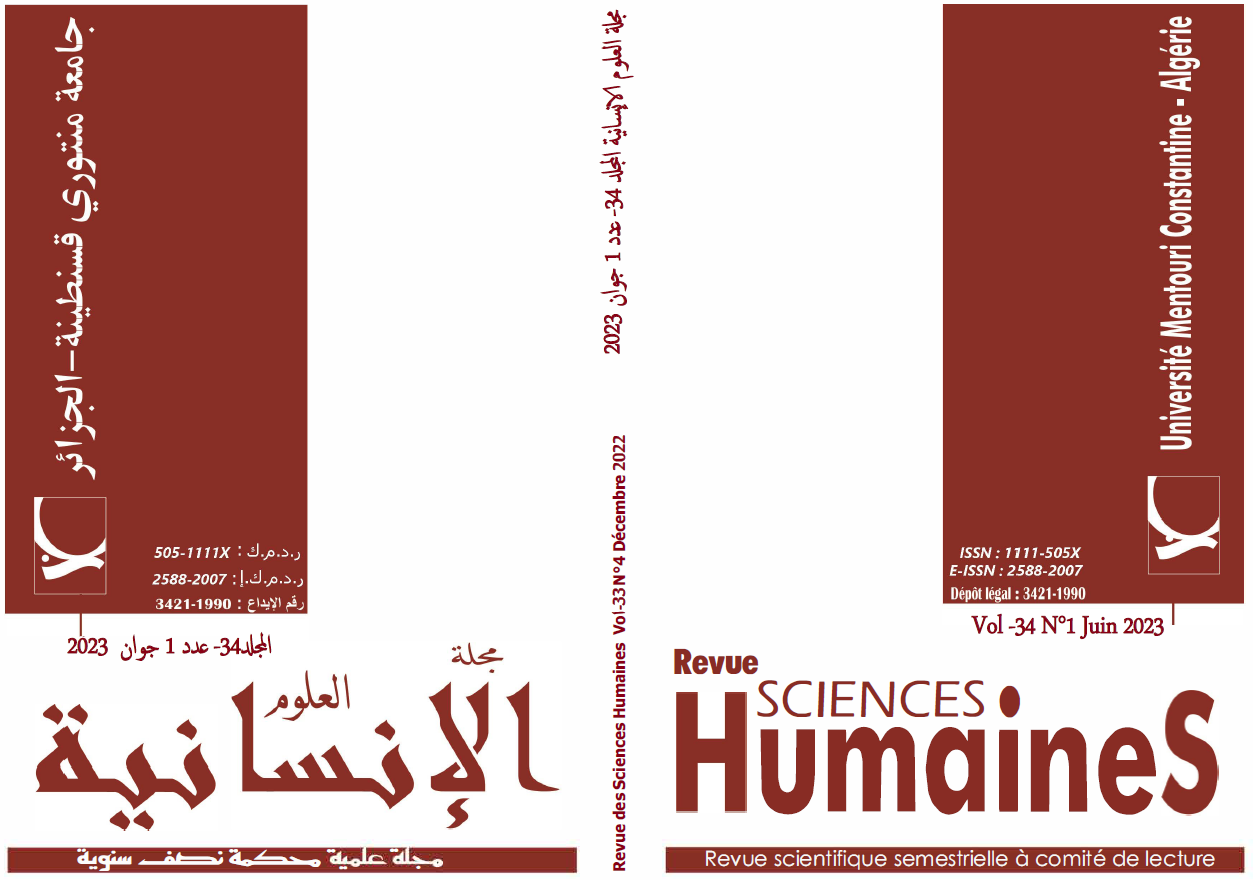Perception of psychosocial risks in hospitals:
assessment and prevention
Keywords:
Psychosocial risk, burnout, turnover, healthcare workersAbstract
The objective of this study is to carry out a diagnosis of the work situation in terms of psychosocial risks experienced by the nursing staff, to analyze the work situation within the EPH of Touggourt, to identify the psychosocial risk factors in a hospital environment in order to find possible solutions to this situation. To achieve our objective, we used a questionnaire survey distributed to 94 workers. The results show that most of the respondents say they have high demands at work compared to their colleagues in the service. All hospital staff say they work with patients in pain and distress. Also, the respondents state that it is possible to find another better job, because they are dissatisfied with their current job.
Downloads
References
Applebaum, D., Fowler, S., Fiedler, N., Osinubi, O., & Robson, M. (2010). The impact of environmental factors on nursing stress, job satisfaction, and turnover intention. The Journal of nursing administration, 40, 323.
Chen, M.-F., Lin, C.-P., & Lien, G.-Y. (2011). Modelling job stress as a mediating role in predicting turnover intention. The service industries journal, 31(8), 1327‑1345.
Collange, J., Tavani, J.-L., & Soula, M.-C. (2013). Regards croisés sur le burn-out : Aspects médicaux et psychologiques. Archives des Maladies Professionnelles et de l’Environnement, 74(1), 35‑43.
Gollac, M., & Bodier, M. (2011). Mesurer les facteurs psychosociaux de risque au travail pour les maîtriser. Rapport du Collège d’expertise sur le suivi des risques psychosociaux au travail, faisant suite à la demande du Ministre du travail, de l’emploi et de la santé.
Greenhalgh, L., & Rosenblatt, Z. (1984). Job insecurity : Toward conceptual clarity. Academy of Management review, 9(3), 438‑448.
Hellgren, J., & Sverke, M. (2003). Does job insecurity lead to impaired well‐being or vice versa ? Estimation of cross‐lagged effects using latent variable modelling. Journal of Organizational Behavior: The International Journal of Industrial, Occupational and Organizational Psychology and Behavior, 24(2), 215‑236.
Karasek Jr, R. A. (1979). Job demands, job decision latitude, and mental strain : Implications for job redesign. Administrative science quarterly, 285‑308.
Kernani, S. (2016). Risques psychosociaux & démocratie organisationnelle : Un observatoire pour l’Algérie.
Leka, S., Jain, A., & World Health Organization. (2010). Health impact of psychosocial hazards at work : An overview.
Maslach, C., & Leiter, M. (2006). Burnout. Stress and quality of working life: current perspectives in occupational health, 37, 42‑49.
Siegrist, J., Starke, D., Chandola, T., Godin, I., Marmot, M., Niedhammer, I., & Peter, R. (2004). The measurement of effort–reward imbalance at work : European comparisons. Social science & medicine, 58(8), 1483‑1499.
Sverke, M., Hellgren, J., & Näswall, K. (2006). Job insecurity : A literature review. Arbetslivsinstitutet Stockholm.
Westman, M., Etzion, D., & Danon, E. (2001). Job insecurity and crossover of burnout in married couples. Journal of Organizational Behavior: The International Journal of Industrial, Occupational and Organizational Psychology and Behavior, 22(5), 467‑481.
Downloads
Published
How to Cite
Issue
Section
License
Copyright (c) 2023 Human Sciences Journal

This work is licensed under a Creative Commons Attribution-NonCommercial-NoDerivatives 4.0 International License.

















